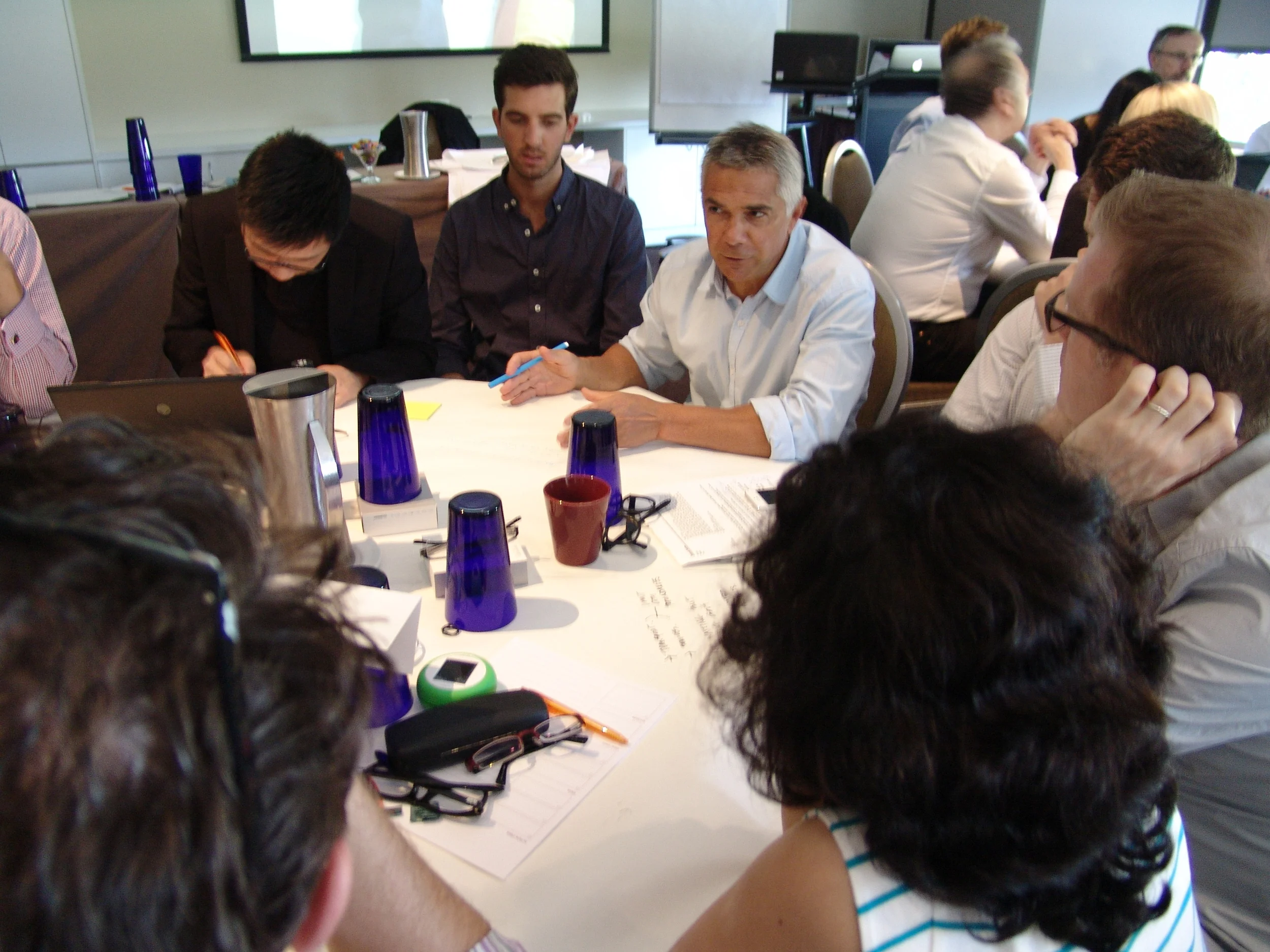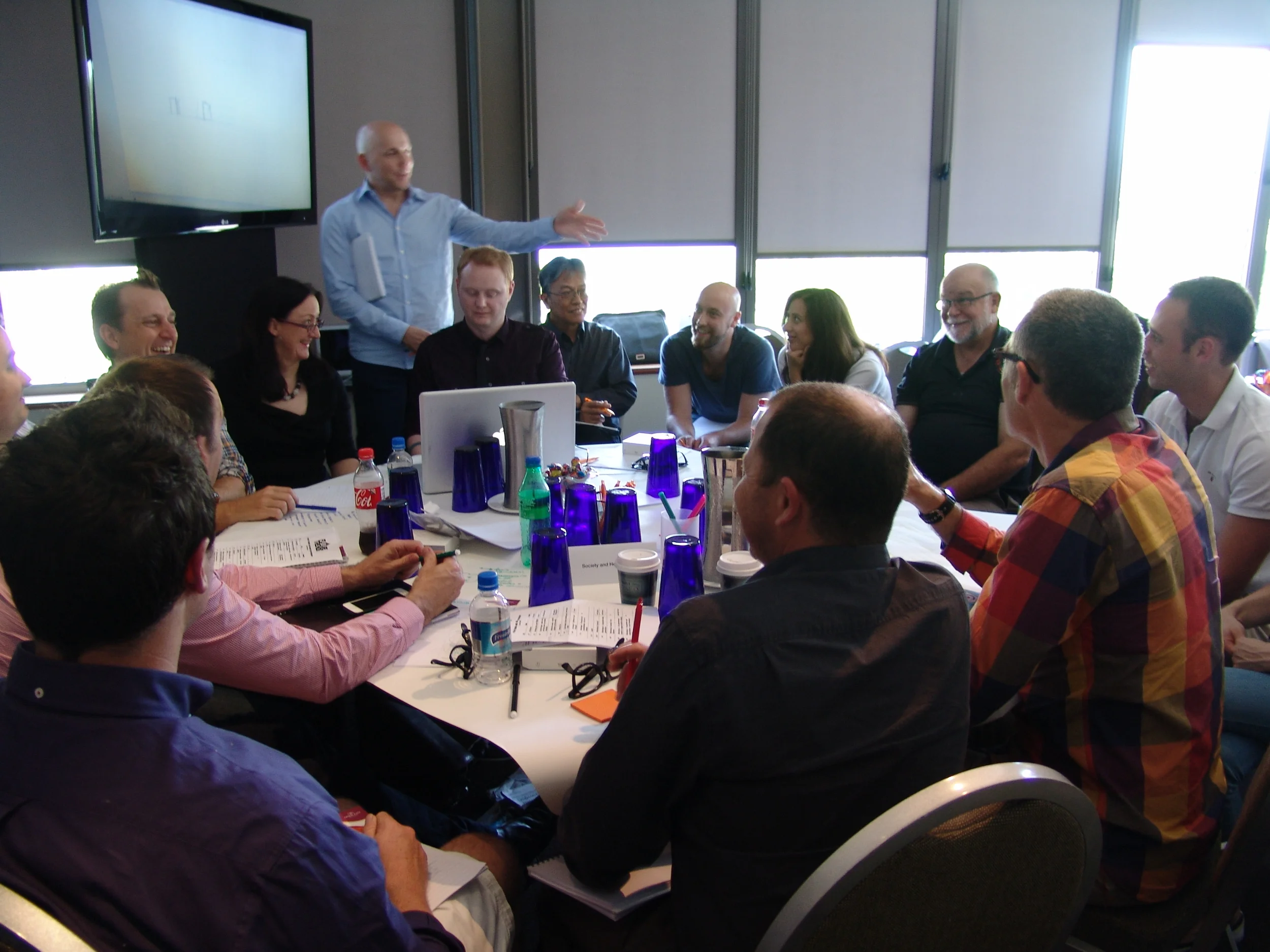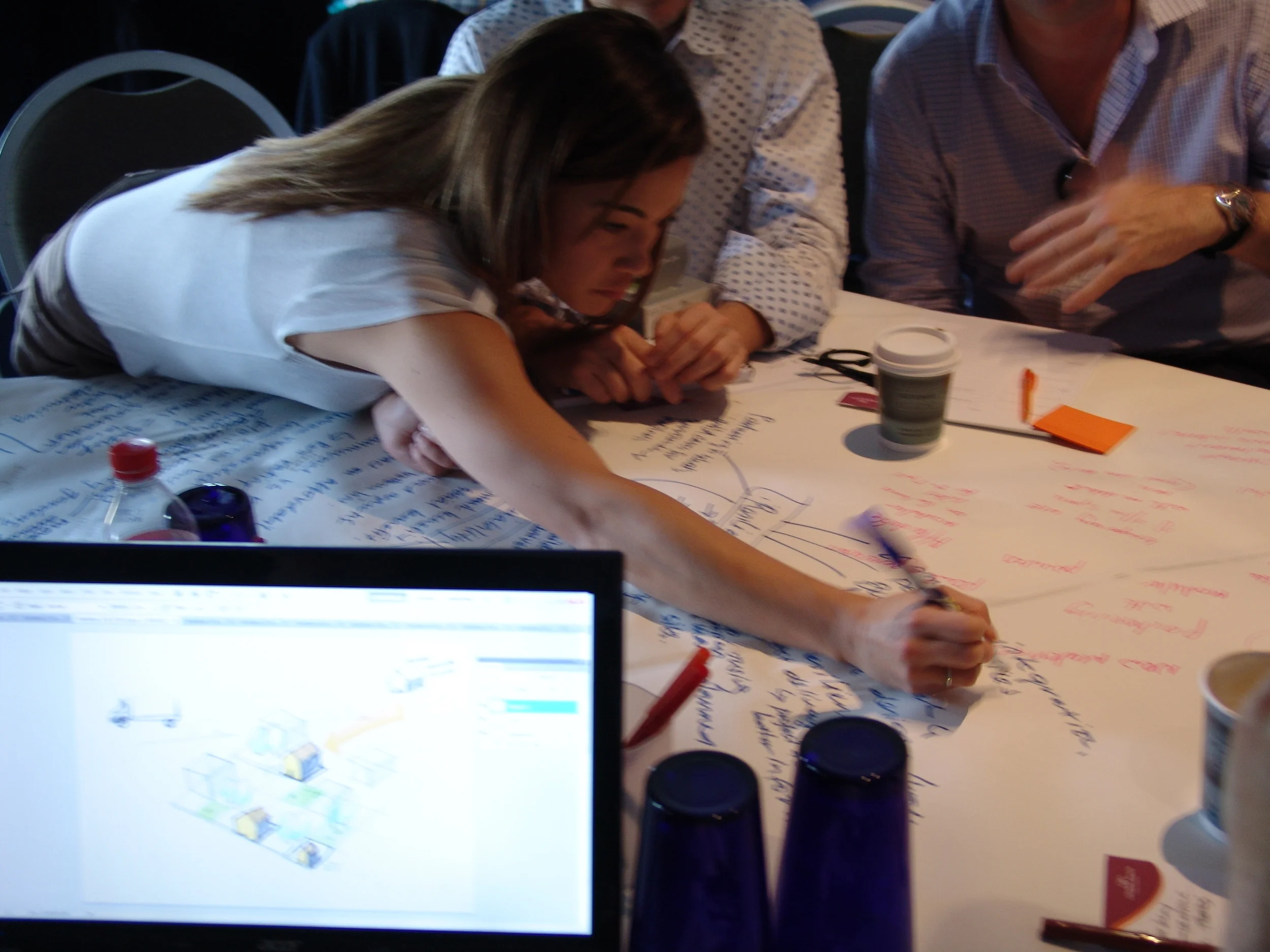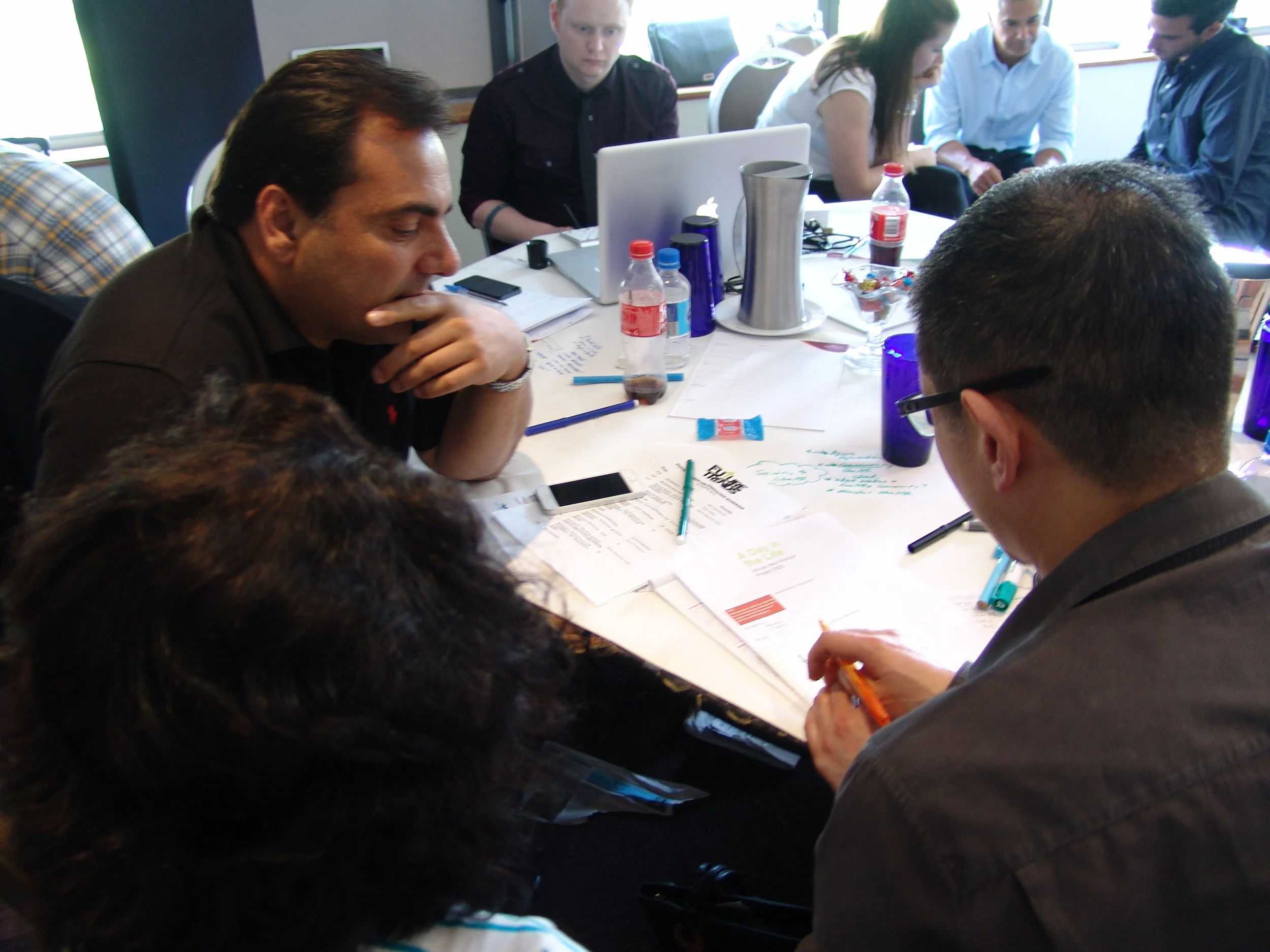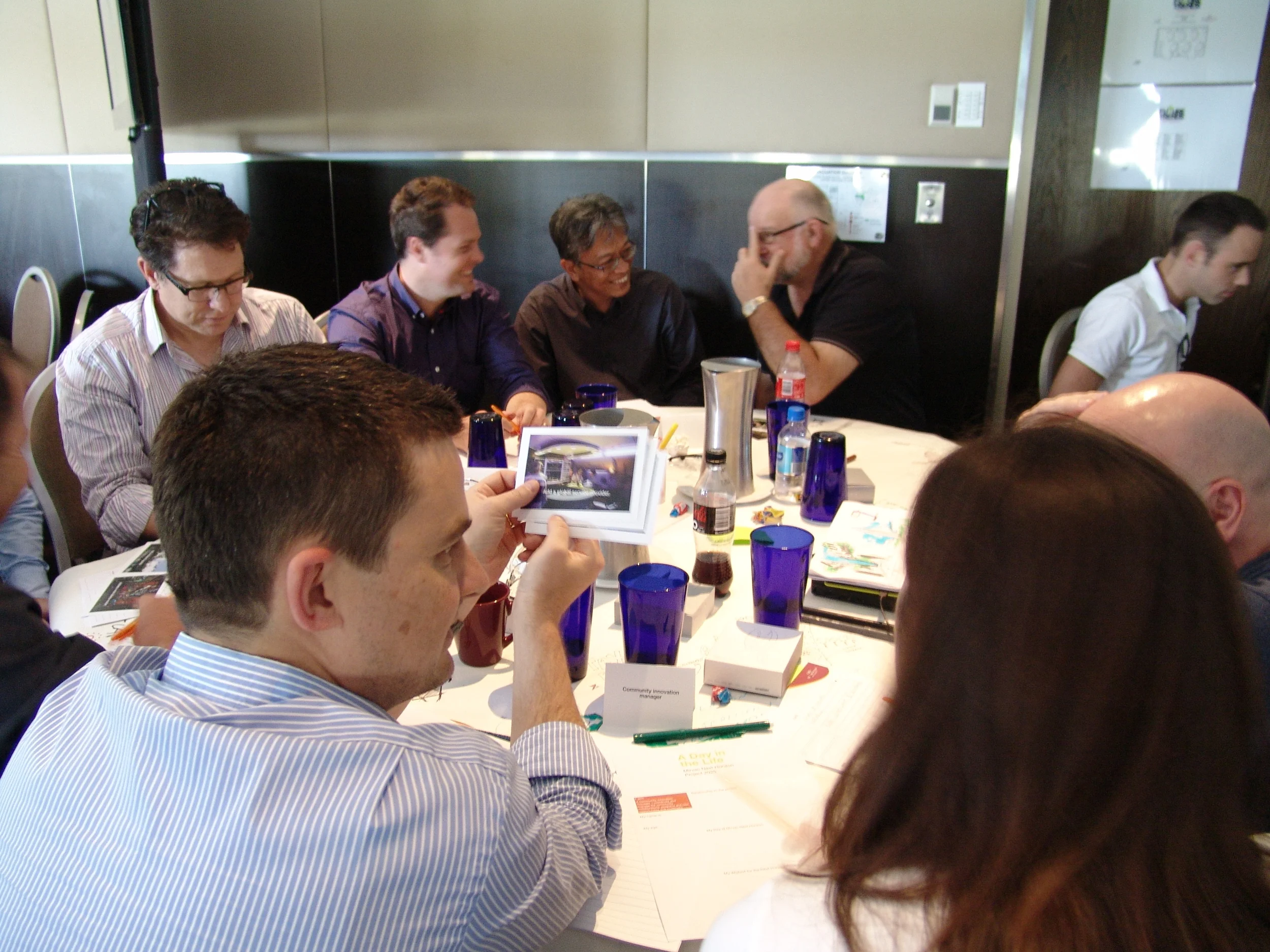Next Horizon 2025 Trends and case studies
50 people from the broad range of Mirvac stakeholders came together for a workshop on Wednesday 23 October to explore future challenges and opportunities around urban development. Workshop participants worked with visualisers from Crowd to build up ideas and images that captured the opportunities as they emerged from the discussions. These images were projected into the room as the ideas emerged to further stimulate discussion. Workshop tools and personas were developed to support the workshop process. The resulting concepts were released in an internal report to stakeholders.
An initial presentation introducing emerging topics and trends helped set the scene. The material covered included:
Topic: Boundaries
Trend: Metropolitan revolution
Federal and state governments are legacy institutions. Cities are the new engines of innovation rising to the challenges of the twenty-first century. What does this mean for Business? How do we work with them?
Trend: Wicked problems
Building trans-disciplinary teams and collaborations.
In our increasingly pluralistic society there is one single definition of the public good. To create the best outcomes for everyone, multiple viewpoints and knowledge are required. And every project or situation is unique and needs to be addressed as such. There will not be one solution but many. How do you choose?
Topic: Community and health
Trend: Agile housing
Creating a flexible fit for shifting and diverse demographics.
Most Australians see themselves as part of their local community. The make up of these communities and Australian society is radically changing and yet residents are given very little choice in what they are offered and how their area changes. With more engagement can we learn more about what people want and create more lee-way to develop better solutions?
Trend: Active Design
Active Design and creating healthy environments.
We are currently digesting the challenges of disability access. Next is Active Design. How do you ensure your infrastructure supports and encourages physical exercise to fight the obesity and diabetes pandemic?
Trend: Transport for suburbia
Access and affordability and the VAMPIRE maps
Public transport has to be a choice, not a ride of last resort, if we are reduce traffic congestion and lower our carbon footprint. Usable public transport is about network planning not urban density. As the cost of oil and petrol rise those communities without good transport options and good local infrastructure including fresh food and schools will become vulnerable to increasing socio-economic stresses.
Topic: Technology
Trend: The smart city
The Smart City. Big Data and the digital landscape.
More and more, our lives are shaped by data and lived on-line. How should data shape our physical spaces? Is data used to more aggressively target consumers or to create better experiences?
Trend: Living Labs
The new research is doing not talking.
Competition between market competitors and cities is now so high and the challenges of social and climate change so pressing there is no time to research and reflect. We have to act and refine. How do we do that?
Trend: The maker revolution
Mass customisation, 3D printing, prefabrication and on-site factories.
Advances in portable CNC equipment, factory fabrication, digital control of services and 3D printing are creating new ways of fabricating buildings that allow for more choice, more technology and modular flexible designs. How can these be meaningfully incorporated into a future business model and approach?
Topic: Resilient urban design
Trend: Resilience and sustainability
Resilience, sustainability, climate change, peak oil and social change.
Changes in our climate and the rising cost of resources is putting pressure on us to design more resilient systems; systems of provision and production. How do we build resilient precincts that will create safe and comfortable community environments, both commercial and residential?
Trend: Food sensitive planning and urban design
Productive landscapes and communities.
What does it mean to incorporate productive landscapes and community gardens into all urban infra-structure? What are the systems that need to be designed that will support this? How do you design to create jobs, fresh food and better cultural outcomes?
Project team
Facilitation: Michael Trudgeon
Research: Michael Trudgeon, Costa Gabriel, Adelle Lin
Workshop management: Adelle Lin
Visualisers: Tracy Tung, Glen Tay, Michael Loreto, Will Owen
Graphic design: Elsie Andrewes






